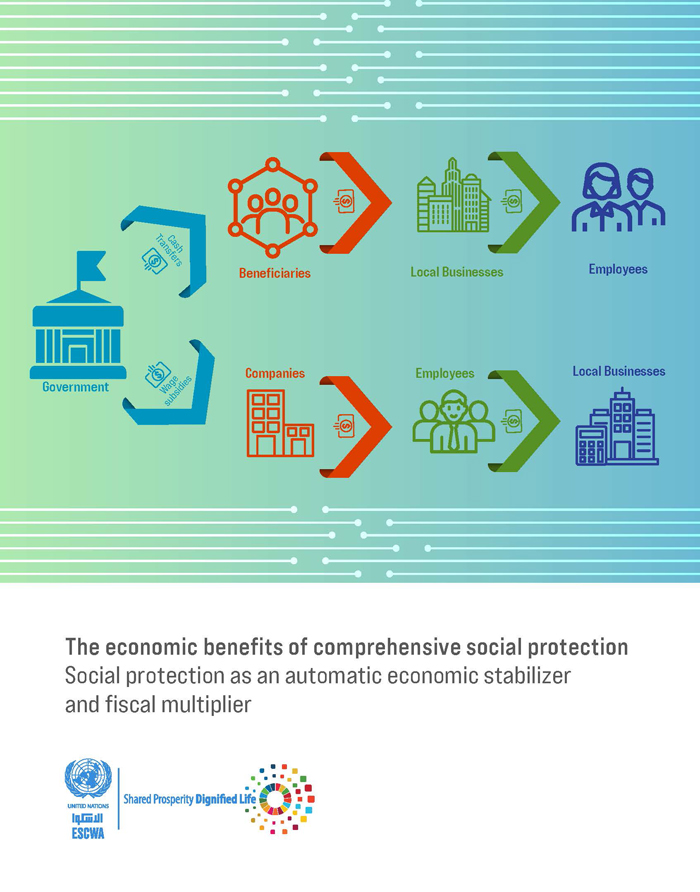
ESCWA Publication: E/ESCWA/CL2.GPID/2022/TP.6
Country: Kingdom of Morocco
Publication Type: Information material
Cluster: Gender Justice, Population and Inclusive Development
Focus Area: Population dynamics & migration
Initiatives: Addressing multidimensional poverty
SDGs: Goal 1: No Poverty
Keywords: Multidimentional poverty index, Social protection, Technical cooperation, Household expenditures, Household size, Household surveys, Poverty, Social security
Impact of social protection programs on multidimensional poverty: Application to Morocco
March 2022
The analysis of the impact of public policies fighting poverty usually considers a measure of monetary poverty. Few are the studies that focused on this type of analysis from a multidimensional perspective. In this report, we address the impact of the reform of the social protection system on multidimensional poverty in Morocco, as measured by the revised Arab Multidimensional Poverty Index (MPI) introduced by ESCWA and Oxford Poverty and Human Development Initiative (OPHI).
To this end, we propose an approach based on a random mechanism for targeting individuals who benefit from the conducted reforms. We start by identifying the intersections between social protection systems, and the dimensions and indicators used in the construction of the MPI. Based on the recommendations of the National Conference on Social Protection in Morocco, we have selected three indicators relating to health and education. Using data from the 2018 National Survey on Population and Family Health (ENPSF), we measure the impact of social protection reforms on measures of multidimensional poverty in Morocco.
Our results show that following the implementation of social protection reforms, the intensity of deprivations according to the targeted indicators may decrease for some households but the incidence of multidimensional poverty may remain unchanged. We have also constructed simulated confidence intervals for these measurements. We thus demonstrate that the proposed approach, which is easy to use and implement, is relevant in this context.
Related content
Population dynamics & migration
,
The analysis of the impact of public policies fighting poverty usually considers a measure of monetary poverty. Few are the studies that focused on this type of analysis from a multidimensional perspective. In this report, we address the impact of the reform of the social protection system on multidimensional poverty in Morocco, as measured by the revised Arab Multidimensional Poverty Index (MPI) introduced by ESCWA and Oxford Poverty and Human Development Initiative (OPHI).
To this end, we propose an approach based on a random mechanism for targeting individuals who benefit from the conducted reforms. We start by identifying the intersections between social protection systems, and the dimensions and indicators used in the construction of the MPI. Based on the recommendations of the National Conference on Social Protection in Morocco, we have selected three indicators relating to health and education. Using data from the 2018 National Survey on Population and Family Health (ENPSF), we measure the impact of social protection reforms on measures of multidimensional poverty in Morocco.
Our results show that following the implementation of social protection reforms, the intensity of deprivations according to the targeted indicators may decrease for some households but the incidence of multidimensional poverty may remain unchanged. We have also constructed simulated confidence intervals for these measurements. We thus demonstrate that the proposed approach, which is easy to use and implement, is relevant in this context.



